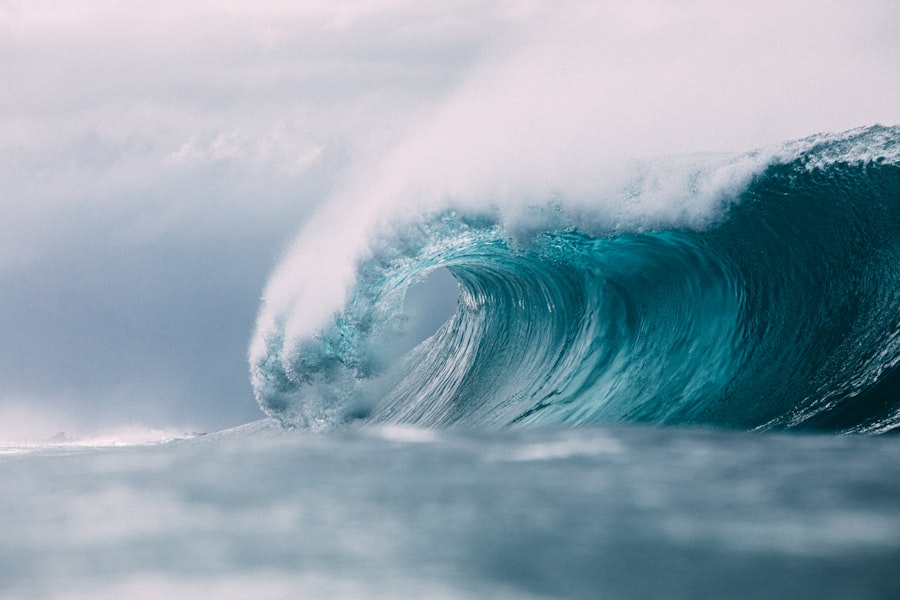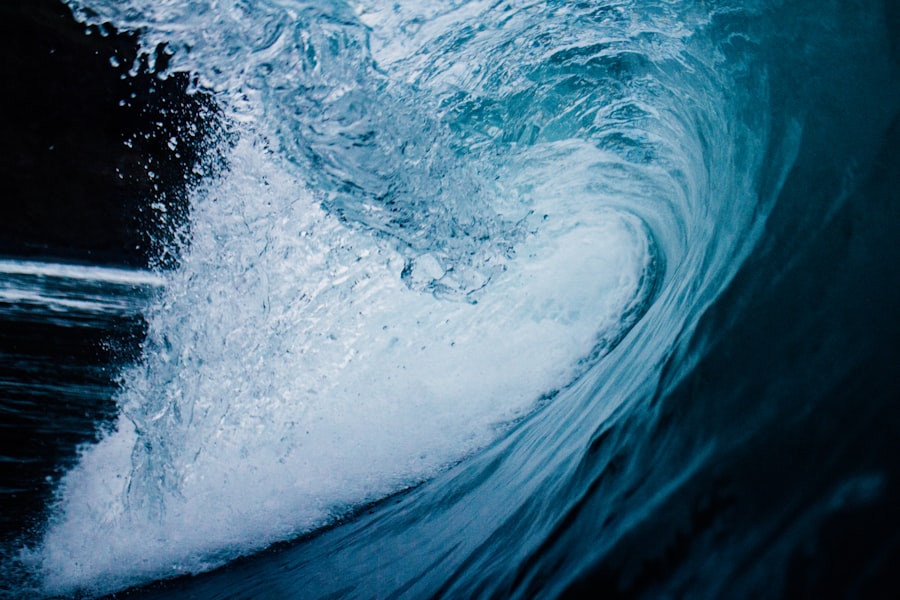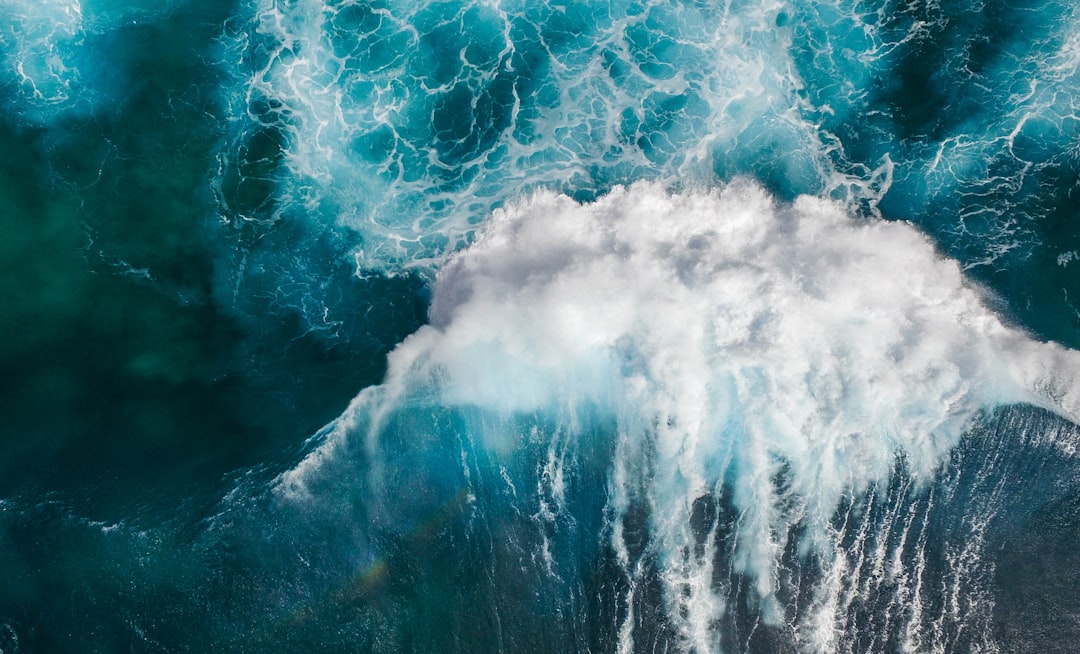The Drake Passage, a body of water situated between the southern tip of South America and Antarctica, serves as a critical conduit for those seeking to explore the icy continent. Spanning approximately 600 kilometers, this passage is renowned for its tumultuous waters and unpredictable weather patterns. It is often described as the most challenging maritime route in the world, where the Atlantic and Pacific Oceans converge.
The passage is not merely a geographical feature; it represents a significant threshold for adventurers, researchers, and tourists alike, all eager to witness the breathtaking landscapes and unique ecosystems of Antarctica. Navigating the Drake Passage is an experience that combines both excitement and trepidation. The waters are notorious for their rough conditions, with waves that can reach staggering heights.
This unpredictability is largely due to the absence of land barriers, allowing winds to whip across the ocean unimpeded. For many, crossing the Drake Passage is a rite of passage, a test of endurance that marks the beginning of an Antarctic adventure. As travelers prepare to embark on this journey, they are often filled with a mix of anticipation and anxiety, aware that they are about to traverse one of the most formidable maritime routes on Earth.
Key Takeaways
- The Drake Passage is the gateway to Antarctica, known for its treacherous waters and challenging conditions.
- Navigating the world’s most massive waves requires careful preparation and experienced crew members.
- Essential gear and safety measures are crucial for preparing for the journey through the Drake Passage.
- Handling rough seas and high winds requires a combination of skill, experience, and proper equipment.
- Observing the unique flora and fauna of the Drake Passage is a rewarding part of the journey to Antarctica.
The Impact of Massive Waves: Navigating the World’s Most Treacherous Waters
The Drake Passage is infamous for its massive waves, which can rise to heights of over 10 meters during storms. These colossal swells are a result of the strong winds that sweep across the open ocean, creating a chaotic environment that can challenge even the most seasoned mariners. The combination of powerful currents and shifting weather patterns contributes to the passage’s reputation as one of the most treacherous waters in the world.
For those aboard vessels traversing this route, understanding the dynamics of these waves is crucial for ensuring safety and comfort. Navigating through such tumultuous waters requires skill and experience. Captains and crew must be adept at reading the sea and anticipating changes in weather conditions.
They often employ advanced technology to monitor wave patterns and wind speeds, allowing them to make informed decisions about their course. Despite these precautions, the sheer force of nature can be overwhelming, and even well-prepared vessels can find themselves at the mercy of the elements. For travelers, this reality underscores the importance of respecting the power of the ocean while also embracing the thrill of adventure.
Preparing for the Journey: Essential Gear and Safety Measures

Preparation is key when embarking on a journey through the Drake Passage. Travelers must equip themselves with essential gear designed to withstand harsh conditions. Waterproof clothing, sturdy footwear, and insulated layers are vital for keeping warm and dry in unpredictable weather.
Additionally, life jackets and safety harnesses are crucial for ensuring personal safety while on deck. Many travelers also invest in high-quality binoculars and cameras to capture the stunning vistas and wildlife encounters that await them. Safety measures extend beyond personal gear; they also encompass vessel preparedness.
Crew members undergo rigorous training to handle emergencies, ensuring that they are ready to respond to any situation that may arise during the journey. This comprehensive approach to safety not only protects passengers but also fosters a sense of confidence as they set sail into the unknown.
Weathering the Storm: How to Handle Rough Seas and High Winds
| Topic | Metrics |
|---|---|
| Severe Weather | Number of storms per year |
| Impact on Economy | Cost of damage caused by severe weather events |
| Preparedness | Percentage of population with emergency plans |
| Infrastructure Resilience | Number of buildings retrofitted for severe weather |
Experiencing rough seas in the Drake Passage can be daunting, but there are strategies travelers can employ to manage discomfort and anxiety. One effective approach is to remain informed about weather conditions and wave patterns. Understanding what to expect can help mitigate fear and prepare individuals mentally for the journey ahead.
Additionally, finding a stable spot on the vessel—preferably in the middle where motion is less pronounced—can significantly reduce feelings of seasickness. Another important aspect of weathering the storm involves maintaining a positive mindset. Engaging in activities such as reading, socializing with fellow travelers, or enjoying onboard amenities can distract from discomfort caused by rough seas.
Many vessels offer motion sickness remedies, including over-the-counter medications or natural alternatives like ginger or acupressure bands. By taking proactive steps to manage their experience, travelers can navigate through challenging conditions with greater ease.
The Role of Experienced Crew: Navigating the Drake Passage with Expertise
The expertise of a skilled crew is invaluable when navigating the Drake Passage. These professionals possess extensive knowledge of maritime navigation and are trained to handle the unique challenges posed by this treacherous route. Their experience allows them to make quick decisions in response to changing weather conditions and unexpected obstacles, ensuring that passengers remain safe throughout their journey.
Moreover, crew members often serve as educators, sharing insights about the geography, wildlife, and history of the region with travelers. This added layer of knowledge enriches the experience, transforming a simple voyage into an educational adventure. Passengers benefit from their crew’s familiarity with local waters, gaining a deeper appreciation for both the beauty and complexity of this remarkable maritime environment.
Wildlife Encounters: Observing the Unique Flora and Fauna of the Drake Passage

One of the most captivating aspects of traversing the Drake Passage is the opportunity to observe its unique wildlife. The waters are teeming with life, from majestic whales breaching the surface to playful seals basking on ice floes. Birdwatchers are particularly delighted by the sight of albatrosses gliding gracefully overhead, their wingspans reaching up to 3 meters.
These encounters provide travelers with unforgettable memories and a profound connection to nature. The rich biodiversity found in this region is a testament to its ecological significance. The nutrient-rich waters support an array of marine life, including krill, which serves as a vital food source for many species.
As travelers navigate through these waters, they are not only witnessing incredible wildlife but also gaining insight into the delicate balance of this ecosystem. Such experiences foster a sense of responsibility towards conservation efforts aimed at protecting these remarkable creatures and their habitats.
Overcoming Seasickness: Tips for Coping with Motion Sickness on the Passage
Seasickness is a common concern for many travelers embarking on a journey through the Drake Passage. However, there are several strategies individuals can employ to alleviate symptoms and enhance their overall experience. One effective method is to stay hydrated and maintain a light diet before and during travel.
Consuming small meals that are low in fat can help minimize nausea while providing necessary energy. In addition to dietary adjustments, travelers may find relief through various remedies available onboard or at pharmacies. Over-the-counter medications specifically designed for motion sickness can be effective when taken prior to departure.
Natural alternatives such as ginger tea or peppermint oil have also been known to provide comfort for some individuals. By being proactive about their well-being, travelers can focus on enjoying their journey rather than succumbing to discomfort.
The History of the Drake Passage: Exploring the Legacy of Exploration and Discovery
The history of the Drake Passage is steeped in tales of exploration and discovery that date back centuries. Named after Sir Francis Drake, who navigated these waters in the late 16th century, this passage has long been a focal point for adventurers seeking new frontiers. Early explorers faced immense challenges as they sought to chart unknown territories, often risking their lives in pursuit of knowledge.
Throughout history, numerous expeditions have traversed these waters, each contributing to our understanding of geography and marine science. The passage has served as a gateway for scientific research into climate change, oceanography, and biodiversity in polar regions. Today, it stands as a symbol of human curiosity and resilience—a reminder that exploration continues to shape our world in profound ways.
Alternative Routes: Considering Other Options for Reaching Antarctica
While crossing the Drake Passage is a popular route for reaching Antarctica, there are alternative options worth considering for those seeking different experiences or logistical solutions. Some travelers opt for air travel directly into research stations or tourist hubs on the continent itself, bypassing the rough seas altogether. This option allows individuals to avoid potential discomfort associated with maritime travel while still experiencing Antarctica’s wonders.
Additionally, some expedition cruises offer unique itineraries that include stops at various islands or coastal regions before reaching Antarctica. These routes may provide opportunities for wildlife viewing or cultural experiences along the way, enriching travelers’ journeys beyond just reaching their final destination. By exploring alternative routes, adventurers can tailor their experiences based on personal preferences and interests.
Environmental Concerns: Navigating the Drake Passage while Minimizing Impact
As interest in Antarctic exploration grows, so too do concerns about environmental sustainability in navigating the Drake Passage. The delicate ecosystems found in this region require careful consideration from travelers and operators alike. Responsible tourism practices are essential for minimizing human impact on wildlife habitats and preserving natural resources.
Many expedition companies are now adopting eco-friendly practices aimed at reducing their carbon footprint during voyages through these waters. This includes utilizing fuel-efficient vessels, implementing waste management systems onboard, and promoting awareness among passengers about responsible behavior while observing wildlife. By prioritizing environmental stewardship, travelers can enjoy their adventures while contributing positively to conservation efforts in this pristine region.
The Rewards of the Journey: Experiencing the Beauty and Majesty of Antarctica
Despite its challenges, crossing the Drake Passage ultimately leads to one of nature’s most awe-inspiring destinations: Antarctica itself. The rewards of this journey are immeasurable—travelers are greeted by breathtaking landscapes characterized by towering icebergs, vast glaciers, and pristine wilderness teeming with life. The sheer beauty of this remote continent leaves an indelible mark on all who visit.
Moreover, experiencing Antarctica fosters a deep appreciation for our planet’s fragility and resilience. Witnessing firsthand how climate change impacts this pristine environment serves as a powerful reminder of humanity’s responsibility towards conservation efforts worldwide. For many adventurers, traversing the Drake Passage becomes more than just a journey; it transforms into an opportunity for reflection and connection with nature that resonates long after they return home.
In conclusion, navigating through the Drake Passage is an adventure filled with challenges and rewards alike. From understanding its tumultuous waters to preparing adequately for rough seas, each aspect contributes to an unforgettable experience that culminates in witnessing Antarctica’s unparalleled beauty. As explorers continue to traverse this remarkable route, they carry with them not only memories but also a commitment to preserving this extraordinary part of our planet for future generations.
The Drake Passage is notorious for its tumultuous waters and massive waves, often challenging even the most seasoned sailors. This body of water, located between the southern tip of South America and Antarctica, is where the Atlantic and Pacific Oceans converge, creating some of the most unpredictable and formidable sea conditions on the planet. For those interested in learning more about the dynamics of ocean waves and the unique challenges posed by the Drake Passage, a related article can be found on MyGeoQuest. This article delves into the geographical and meteorological factors that contribute to the size and power of the waves in this region. You can read more about it by visiting mygeoquest.
com/’>MyGeoQuest.
WATCH NOW! Drake Passage: Earth’s Deadliest Waters Revealed
FAQs
What is the Drake Passage?
The Drake Passage is the body of water between the southern tip of South America at Cape Horn and the South Shetland Islands of Antarctica. It is known for its rough seas and challenging sailing conditions.
How big are the waves in the Drake Passage?
The waves in the Drake Passage can reach heights of 30 feet (9 meters) or more during storms. The area is notorious for its strong winds and large swells, making it one of the roughest stretches of water in the world.
What causes the large waves in the Drake Passage?
The large waves in the Drake Passage are primarily caused by the strong westerly winds that sweep across the Southern Ocean. These winds can generate powerful waves that can be challenging for ships to navigate.
Are the waves in the Drake Passage always large?
The waves in the Drake Passage are not always large, but the area is known for its unpredictable and often rough sea conditions. Storms and strong winds can lead to particularly large waves, making it a challenging area for maritime travel.
Are there specific times of the year when the waves are larger in the Drake Passage?
The waves in the Drake Passage can be large at any time of the year, but they are often most intense during the austral winter (June to August) when storms and strong winds are more common in the Southern Ocean.
